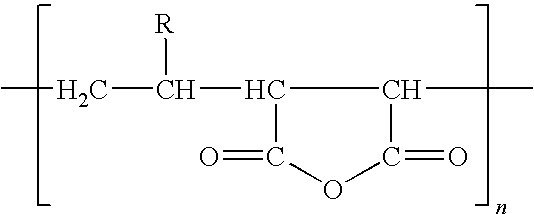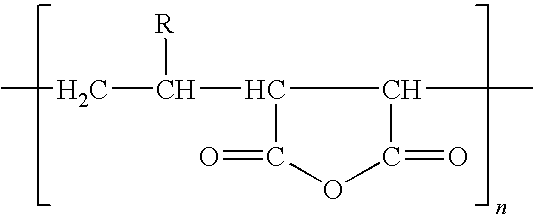Method for Reducing Fouling in Furnaces
a technology of additives and furnaces, applied in the field of additives, can solve the problems of increased energy costs, increased energy costs, and the surface of the tubes in the heat exchanger may be exposed to extreme heat, and achieve the effect of reducing the fouling of the heat exchanger
- Summary
- Abstract
- Description
- Claims
- Application Information
AI Technical Summary
Benefits of technology
Problems solved by technology
Method used
Image
Examples
examples
[0037]The following examples and hypothetical example are provided to illustrate the invention. The examples are not intended to limit the scope of the invention and they should not be so interpreted. Amounts are in weight parts or weight percentages unless otherwise indicated.
example ii
Hypothetical Example II
[0039]An antifoulant additive of the invention having two components, where a first component is a magnesium overbase (MO) and the second component is a maleic anhydride alpha olefin copolymer (CP), is used to treat the pyrolysis unit described in the hypothetical comparative example. The ratio of CP:MO 1:2 and the antifoulant additive is fed at a rate of 800 ppm by with into the feed stream using two drums each having its own pump, the effluent from the pump going through a static mixer, and the antifoulant additive being fed into the process stream just prior to process stream entering the furnace. The average time between cleanings for the 4 heat exchangers is 66 days.
example 1
[0040]Several 50 ml samples of EDC feed is added to pre-weighed 150 mL Ace Glass slit vented covered reactor liners. Additives were included into each sample as shown below in the Table. Each compound was added as the specified number of microliters of a solution having a concentration of each agent also shown in the table. The reactor liner is placed into a reactor. An overhead (clean) reaction vessel / transfer line is tared and secured to the test reactor.
[0041]The furnace is heated to a range of from about 890° F. to 950° F. (476° C. to 510° C.). The reactor is then placed into the heated furnace. An automated computer based test program records the test elapsed time, sample temperature and autoclave pressure every 30 seconds throughout the test run. The test apparatus is fitted with a 0-1000 psi (0-6.9 MPa) pressure transducer and thermocouples to record test fluid, reactor heater, and reactor chamber / transfer line temperatures. Elapsed time is recorded and at a preset time the r...
PUM
 Login to View More
Login to View More Abstract
Description
Claims
Application Information
 Login to View More
Login to View More - R&D
- Intellectual Property
- Life Sciences
- Materials
- Tech Scout
- Unparalleled Data Quality
- Higher Quality Content
- 60% Fewer Hallucinations
Browse by: Latest US Patents, China's latest patents, Technical Efficacy Thesaurus, Application Domain, Technology Topic, Popular Technical Reports.
© 2025 PatSnap. All rights reserved.Legal|Privacy policy|Modern Slavery Act Transparency Statement|Sitemap|About US| Contact US: help@patsnap.com



